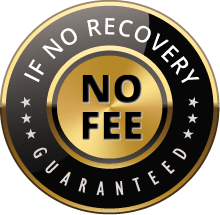Securing the right amount of personal property coverage is a critical aspect of a comprehensive homeowners insurance policy. Determining the appropriate coverage can be challenging, as it requires a careful consideration of the value of possessions within the home. In this detailed blog, we'll explore the factors influencing personal property coverage, specifically focusing on estimated coverage amounts based on home size for insurance purposes. By understanding the relationship between home size and personal property coverage, homeowners can make informed decisions to ensure their belongings are adequately protected in the event of unforeseen circumstances.
The Foundation: Personal Property Coverage Explained
Before delving into estimated coverage amounts based on home size, it's essential to understand the basics of personal property coverage. Personal property coverage is a component of homeowners insurance that protects belongings within the home, including furniture, electronics, clothing, and other valuables. This coverage typically extends to items both inside and outside the home, covering losses caused by specified perils, such as theft, fire, or natural disasters.
Factors Influencing Personal Property Coverage:
-
Home Size:
- The size of your home serves as a foundational factor in determining personal property coverage. Larger homes often contain more possessions, requiring higher coverage limits to safeguard against potential losses.
-
Value of Possessions:
- Assessing the value of your belongings is crucial in estimating personal property coverage. High-value items such as jewelry, art, or collectibles may necessitate additional coverage beyond the standard limits.
-
Inventory Documentation:
- Creating a detailed inventory of possessions is essential for an accurate assessment. Documenting each item, its value, and relevant details can streamline the claims process and ensure you receive fair compensation.
-
Replacement Cost vs. Actual Cash Value:
- Homeowners must decide between insuring personal property at replacement cost or actual cash value. Replacement cost coverage reimburses the full cost of replacing an item, while actual cash value considers depreciation, resulting in a lower payout.
-
Coverage Limits and Sub-Limits:
- Homeowners insurance policies often have coverage limits and sub-limits for specific categories of items. Understanding these limits is crucial, especially for high-value items like jewelry, electronics, or art.
Estimating Personal Property Coverage Based on Home Size:
Small Homes (Up to 1,500 Square Feet):
Homes of smaller sizes typically have fewer possessions, but the value of those possessions can still be substantial. A recommended starting point for personal property coverage in small homes is around $40,000 to $60,000. However, this estimate can vary based on factors such as lifestyle, income, and the presence of high-value items.
Medium Homes (1,500 to 2,500 Square Feet):
Medium-sized homes often house a more extensive collection of belongings. For these homes, a recommended personal property coverage range falls between $60,000 and $100,000. Homeowners with significant assets or valuable possessions may need to adjust this estimate accordingly.
Large Homes (2,500 to 4,000 Square Feet):
Larger homes generally accommodate a greater volume of personal property. Estimated coverage for homes in this size range typically ranges from $100,000 to $150,000. High-income households or those with extensive collections may need to consider coverage on the higher end of this spectrum.
Extra-Large Homes (Over 4,000 Square Feet):
Extra-large homes often house substantial valuables and possessions. Personal property coverage for homes exceeding 4,000 square feet may range from $150,000 to $250,000 or more. Conducting a thorough inventory and considering high-value items is crucial to accurately determine coverage needs.
Tips for Determining Personal Property Coverage:
-
Create a Detailed Inventory:
- Document all possessions, including serial numbers, purchase receipts, and appraisals for high-value items. This inventory serves as a crucial tool for estimating coverage needs and expediting the claims process.
-
Consider High-Value Items:
- Evaluate the value of high-ticket items such as jewelry, art, or electronics. If the standard coverage limits are insufficient, inquire about additional coverage options or endorsements to adequately protect these items.
-
Review Policy Sub-Limits:
- Be aware of any sub-limits within your policy for specific categories of items. Adjust your coverage accordingly to ensure adequate protection for possessions like electronics, artwork, or collectibles.
-
Update Coverage Regularly:
- Periodically reassess your personal property coverage as the value of possessions may change over time. Major life events, acquisitions, or lifestyle changes may warrant adjustments to ensure ongoing adequacy.
-
Consult with an Insurance Professional:
- Seeking guidance from an insurance professional can provide valuable insights. Agents can help assess your unique situation, recommend appropriate coverage, and explain any policy nuances or endorsements that may be beneficial.
Estimating personal property coverage based on home size is a crucial step in ensuring that your homeowners insurance provides adequate protection for your belongings. Homeowners must strike a balance between the size of their home, the value of their possessions, and potential risks. By considering these factors and following the tips outlined in this blog, homeowners can navigate the process of estimating personal property coverage with confidence. A well-informed approach to insurance ensures that, in the face of unforeseen events, your possessions are safeguarded, allowing you to focus on recovery and rebuilding.
At the Voss Law Firm we strive to help you get back to normal as fast as possible after an insurance denial or “low ball” offer. If you feel you have been unfairly treated by your insurance company, please call (888) 296-1986, input your information for a Free Claim Review or chat with us today.



















